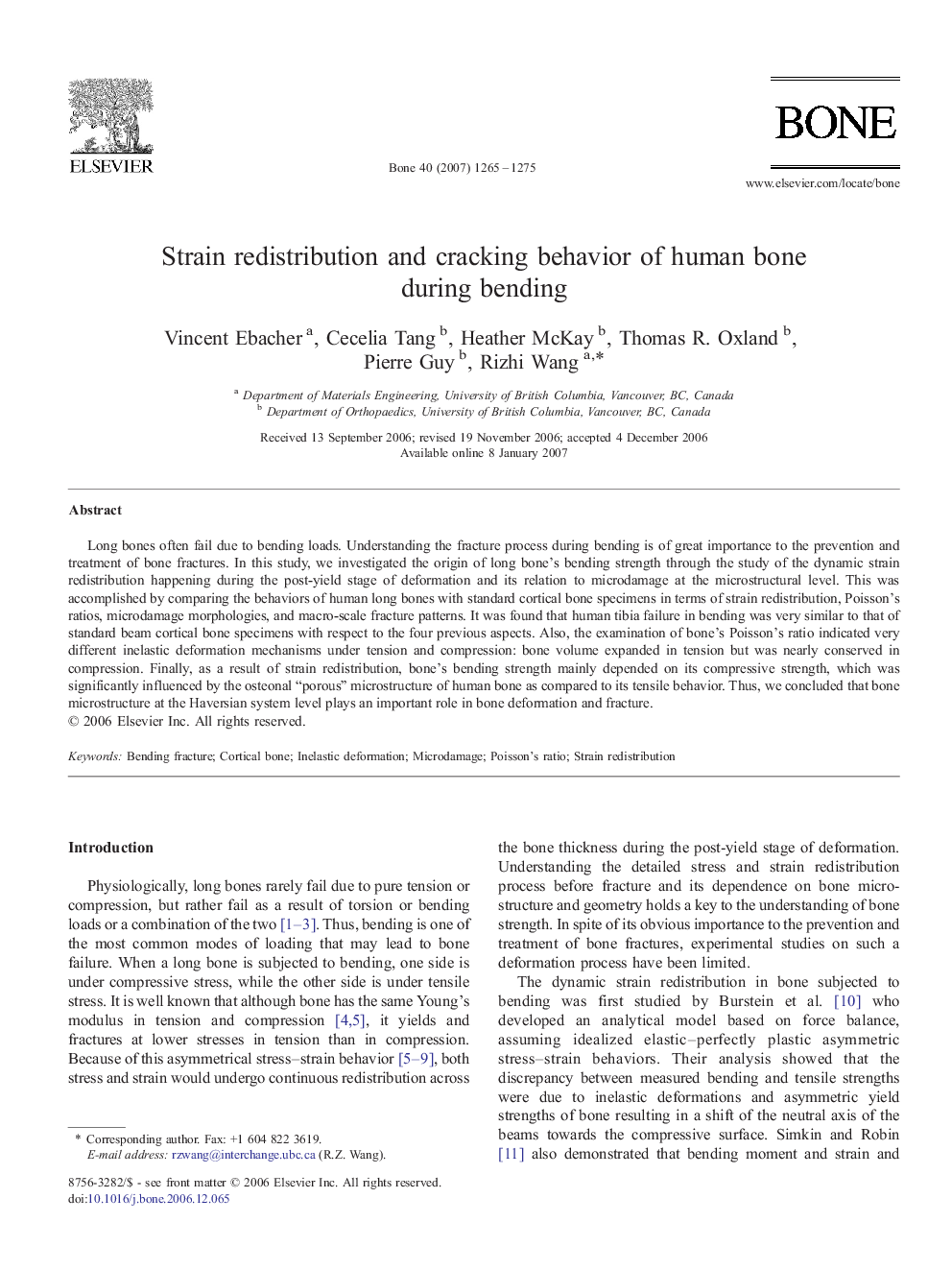| Article ID | Journal | Published Year | Pages | File Type |
|---|---|---|---|---|
| 2781980 | Bone | 2007 | 11 Pages |
Long bones often fail due to bending loads. Understanding the fracture process during bending is of great importance to the prevention and treatment of bone fractures. In this study, we investigated the origin of long bone’s bending strength through the study of the dynamic strain redistribution happening during the post-yield stage of deformation and its relation to microdamage at the microstructural level. This was accomplished by comparing the behaviors of human long bones with standard cortical bone specimens in terms of strain redistribution, Poisson’s ratios, microdamage morphologies, and macro-scale fracture patterns. It was found that human tibia failure in bending was very similar to that of standard beam cortical bone specimens with respect to the four previous aspects. Also, the examination of bone’s Poisson’s ratio indicated very different inelastic deformation mechanisms under tension and compression: bone volume expanded in tension but was nearly conserved in compression. Finally, as a result of strain redistribution, bone’s bending strength mainly depended on its compressive strength, which was significantly influenced by the osteonal “porous” microstructure of human bone as compared to its tensile behavior. Thus, we concluded that bone microstructure at the Haversian system level plays an important role in bone deformation and fracture.
